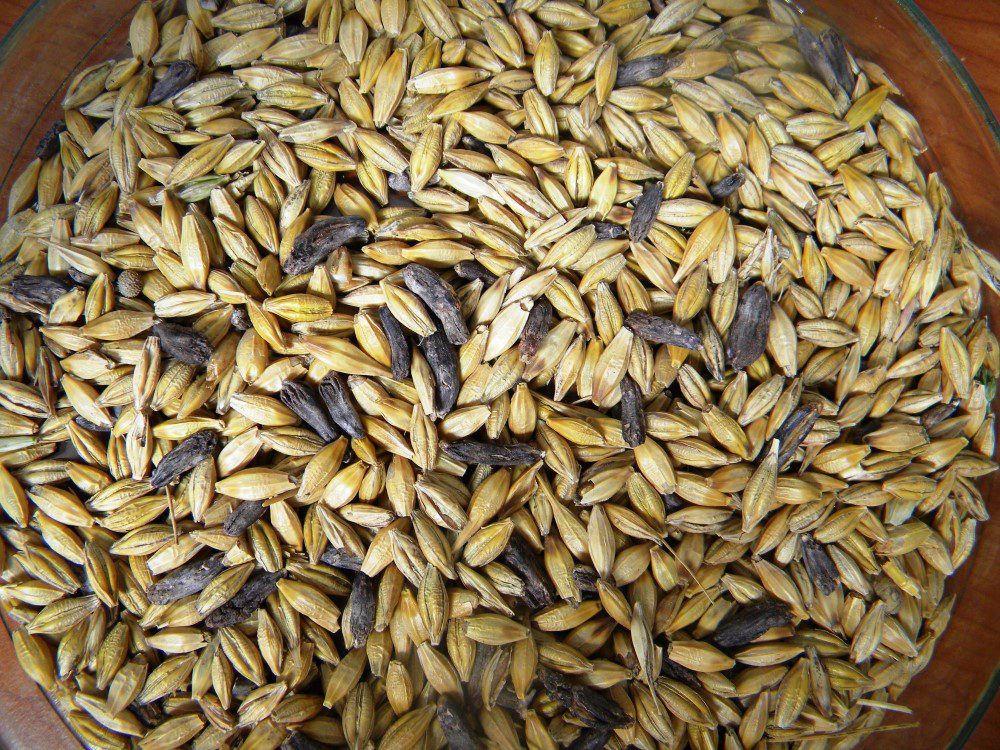The Salem Witch Trials were a regrettable time in America’s history, and in the 329 years that have followed, all of those accused have since been exonerated. As for what led people in 1693 to think that a group of mostly women were bewitched, some have suggested a fungus may have played a role.
Rye bread was a popular carbohydrate around the same time, and it has an unfortunate habit of going moldy in a rather inconspicuous way. Rye ergot loves cold, wet weather and can hide in infected bread as it looks similar to black flecks of grain. It’s caused by a fungus, Claviceps purpurea, that grows parasitically on grains and some wild grasses. Mostly rye, but also other grasses like wheat.
Historically, people have happily chowed down on rye ergot unaware of the dangers, namely a condition called ergotism. The first mentions of it arise in the early Middle Ages when it was feared as the cause of poisonings that could affect thousands of people at a time.
Later, it was called St Anthony’s Fire, in reference to monks who cared for people affected by the gangrenous form of ergotism. In this variety, the disease was thought to act like an invisible fire that caught on people’s limbs, covering them in lesions until they fell off.
“Several men had their limbs afflicted by sores in Paris and neighbouring towns,” Vice reports the historian Flodoard wrote during an epidemic in the year 945. “The limbs, burnt bit by bit, were consumed until death ended the torment.”
Symptoms of another kind of ergotism, unfortunately, lend themselves well to a theory of witchcraft. Convulsive ergotism causes violent seizures that can last for hours and even injure the convulsing person in the process. It can also bring on mania, psychosis, and hallucinations, which – at a time when superstitions were rife – may have led the people of Salem to suspect witchcraft.
In reality, these people may have just eaten some dodgy bread.
“The evidence suggests that convulsive ergotism, a disorder resulting from the ingestion of grain contaminated with ergot, may have initiated the witchcraft delusion,” wrote Linnda R Caporael in a 1976 paper published in Science. In it, she describes “a jigsaw of details pertinent to growing conditions, the timing of events in Salem, and symptomology” that point to ergotism, including the fact that rye was widely eaten, and more than likely parasitized to at least a small extent.
The string of accusations and trials ran almost from one Thanksgiving to the next, following weather than lent itself well to fungal growth. The following year, there was a drought, and the cases of witchcraft dropped off suddenly. The “witches” reported behaviors also align with symptoms of convulsive ergotism, and it’s certainly within C. purpurea’s power to cause such devastation.
A jigsaw of details pertinent to growing conditions, the timing of events in Salem, and symptomology must fit together to create a reasonable case. From these details, a picture emerges of a community stricken with an unrecognized physiological disorder affecting their minds as well as their bodies.
Ergotism’s dramatic influence on the human body is due to its main chemically active agents, ergot alkaloids. The common nucleus to ergot alkaloids was named lysergic acid, and it was pivotal in the creation of LSD, arguably the world’s most famous hallucinogenic drug.
The Salem Witch Trials saw a deluge of accusations against around 200 people, 78 percent of which were women. The witch hysteria lasted just over a year, and of those accused, 19 were executed for worshipping Satan and practicing witchcraft. Many of the arrests happened around Salem and Salem Village, and Salem was the county seat in which the convictions and executions were made, making Massachusetts home to one of the most notable witch trials in history.
If ergotism or the threat of being accused of witchcraft aren’t enough to make you toss gone off bread, maybe the realization that scraping off the mold does nothing will persuade you.
Source Link: The Salem Witch Trials' Accused May Have Fallen Victim To Moldy Bread
